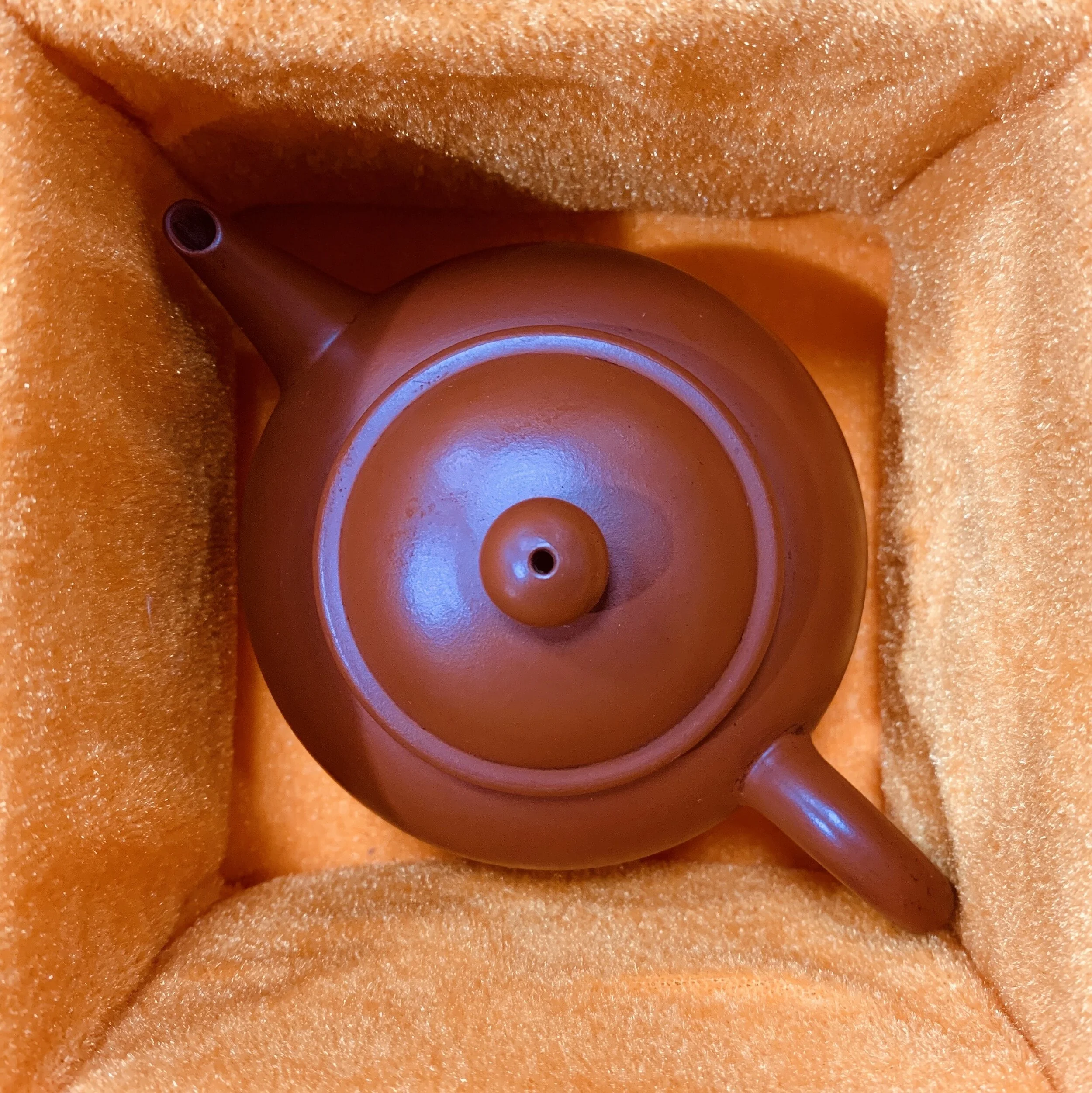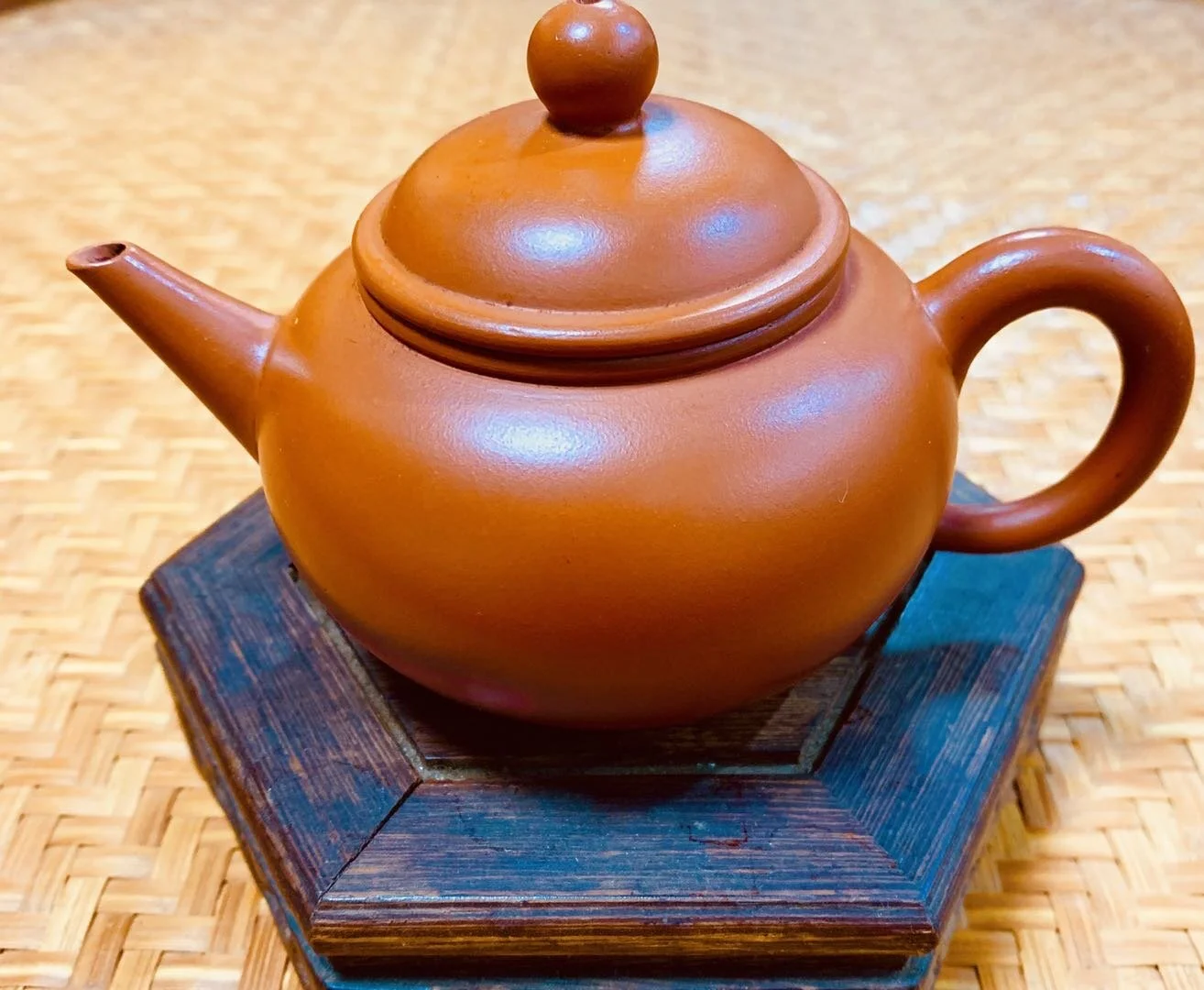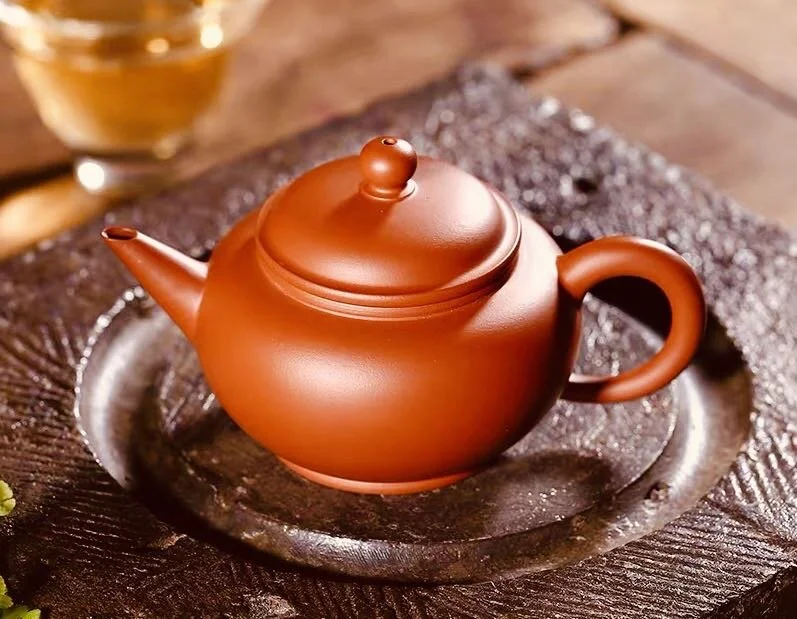Gong Fu Clay Tea Pot




Gong Fu Clay Tea Pot
Hand-crafted with clay, this gong fu clay tea pot can remarkably enhance your tea’s flavor. Since the clay absorbs flavor, you should keep the pot clean by washing it with warm water once you've finished drinking. But never clean it with soap - the soap can seep into the clay and give a soapy aftertaste to the next pots of tea! If you forget to clean it and the old leaves turn foul, adding boiling water, immediately pouring it out, and placing the pot in cold water will freshen the flavor again.
Clay teapots are an indispensable accessory for tea drinkers throughout China. Usually small, squat, and brown, fine craftsmanship and special materials make them an ideal vessel for making tea. The fired clay is uniquely able to bring out the flavors of tea leaves during brewing. Since the clay is absorbent, unlike porcelain or metal, some of the flavor is absorbed into the pot during each brewing. This gives the tea a richer and more mellow flavor - after using a pot many times, the pot itself can flavor boiling water without adding any fresh tea leaves!
Much of the unique quality of these teapots comes from the special dark brown clay they are fashioned from. The clay is not simply dug from the ground, but is actually made from rocks unique to the area, ground into powder and mixed with water. Craftsmen use choose several different types of rock and combine them in different proportions in light of what they are planning to make.
These teapots are not made on a potter's wheel or with thin coils of clay. Instead, artisans use a complex array of hand tools to shape the parts of a teapot, then put them together before firing. All the parts of a single teapot must come from the same lump of clay and must be worked at the same time - otherwise differences in the consistency of the clay or changes in air temperature or humidity of the environment where it is worked could cause cracks and breaks when the pot is fired. Each pot is made of five parts - base, lid, walls, spout, and handle. After "tenderizing" a suitable lump of clay with a heavy wooden mallet, the artisan slices it up and rolls out a thin sheet to use as a base, making it a perfect circle with a small compass. He then rolls out and pounds clay for the walls and shapes them around the base to form the curved sides of the pot. He then forms the handle and spout, attaches them, and then creates the lid, perhaps the most challenging part of the pot. The pot then dries in the air for two days before being fired in a kiln. Since the clay can crack easily, it is slowly moved deeper and deeper into the oven to prevent it from heating too fast. After being fired for 18-24 hours, depending on the clay and the item, the pot is finished and ready for some tea leaves!
This seemingly simple process is actually quite demanding, especially for the simplest and least decorated pots. For while small imperfections can be hidden underneath decorations or carving, even the smallest flaws or imbalances in the shape of an undecorated pot are obvious even to an untrained eye.
